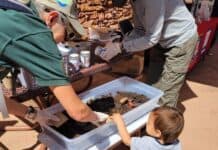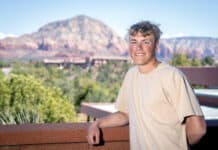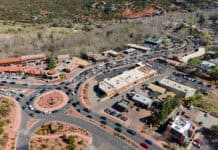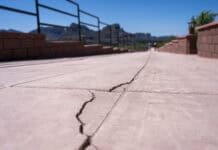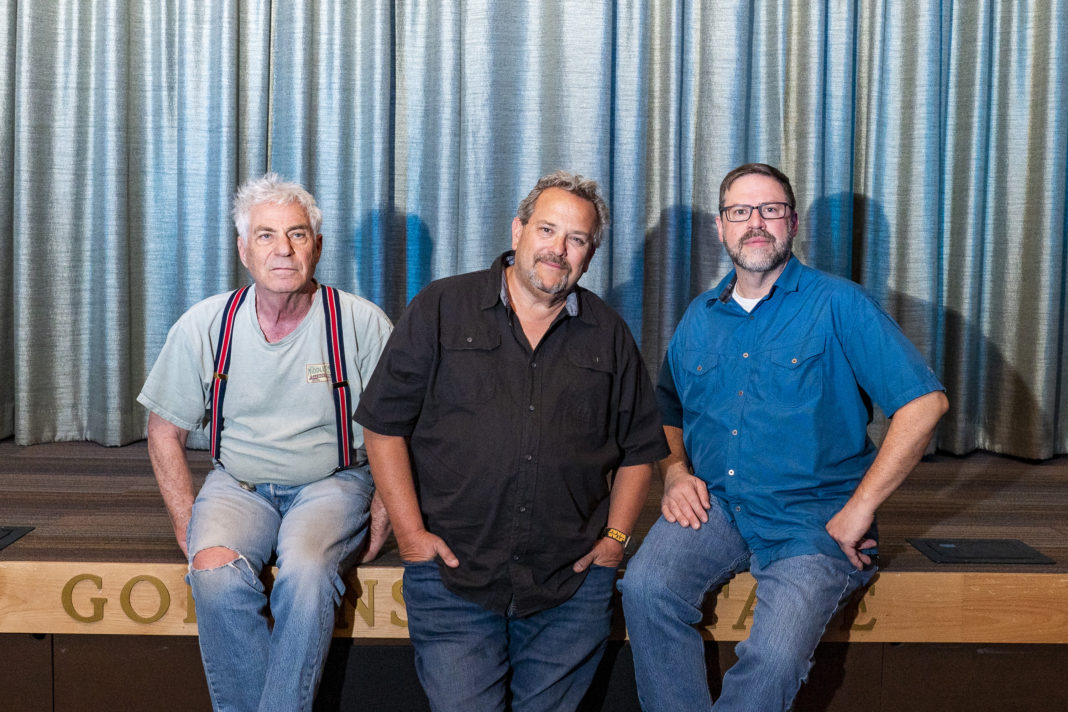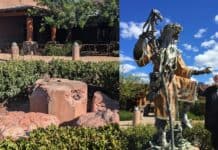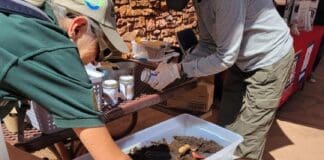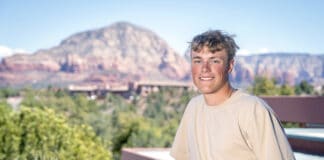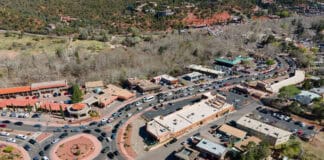Sedona filmmakers Ron Melmon and Bryan Reinhart’s award-winning documentary “Forever Wild” chronicles how a tenacious community in the historic town of Telluride, Colo., rallied and saved their town from development.
To this community of 2,470 residents, the valley floor is the gateway to their town. The film sets a tone of their values which include environmental protection, the priority of wildlife, clean air and clean water. They feared that they could lose their valley and when the chips were down, they continued to forge ahead.
Telluride Town Councilwoman Hilary White Cooper, and board member of Valley Preservation Partners asked, “who’s representing the land? The land needs us to speak for it right now.”
History
During a trip to Telluride to visit his niece, Melmon rode on the gondola, beginning at Mountain Village at 10,500 feet and descending to the valley floor. During the 13-minute ride, he had 360-degree views of the San Juan Mountains, aspen-cloaked mesas and the iconic Bridal Veil waterfalls as well as a bird’s eye view of the town of Telluride. He was awestruck at its beauty and openness.
He said to his niece, “That would be a great place to build a condo or hotel. Why is it an open space?”
She told him the story that property was purchased in 1983 for a reported $6 million to $7 million by billionaire Neal Blue, CEO and chairman of General Atomics, a company best known as the manufacturer of the Predator aerial drone. His intent was to develop the land on the outskirts of Telluride by building a sprawling mega-resort, with golf courses, boating activities and multi-million-dollar homes.
To some, it sounded like Telluride was the perfect place to build, but residents had another point of view. They wanted the pristine acreage to remain wild. The valley floor includes a section of the winding San Miguel River, frequented by elk and other wildlife. Despite numerous proposals and compromises by Blue, residents repeatedly voted against building plans and instead sought to purchase the land through condemnation. They filed a petition in 2004.
The townspeople voted to use Telluride’s eminent domain to acquire 570 acres held by San Miguel Valley Corp., Blue’s holding company, for preservation as open space.
Their efforts to legally condemn the property culminated in a court ruling that triggered a countdown for local activists who tried to purchase the land.
Eminent domain grants local governments the power to seize property for a public benefit, such as roads, parks and libraries. But local governments have stirred controversy in recent years with their creative use of eminent domain.
In Telluride, environmental activists maintain that seizing private property for open-space conservation is a tried-and-true use of eminent domain.
The activists contend that the 570 acres, along the south side of the highway leading into town represents a unique landscape that frames the approach to Telluride and defines the town itself.
Acting on a petition, the National Trust for Historic Preservation named the Telluride Valley Floor in 2001 as one of America’s 11 most endangered historic places.
The land was originally appraised at $26 million, but Blue disputed the appraisal, and a Delta, Colo., jury awarded nearly double the original assessment.
The town of Telluride was fighting an uphill battle. It had only $25.5 million available at the time of the filing and had three months to raise an additional $25 million.
Residents and others rose to the task. More than 1,700 contributed funding, some put second mortgages on their homes and others sold their personal belongings. It was a race against the clock, and in the last remaining hours, they reached out to one last donor.
They met and surpassed the price tag, raising $50.87 million. Tom Creel, Valley Floor Preservation Partners board member, said that they did this together.
“This isn’t about politics, profit, or even about this generation. This is a story about place and stewardship,” Creel. said.
In 2007, the town of Telluride celebrated after a long, exhausting pursuit to save the valley floor.
‘Forever Wild’
After hearing the whole story, Melmon did some research of his own. It wasn’t the David and Goliath story he was after. Instead, Melmon was captivated by the residents’ ability to come together and protect the land that he was more interested in sharing that story to inspire others.
“Forever Wild” was filmed in 2017, even though the series of events happened years prior. Melmon enlisted the help of Reinhart, his friend and fellow filmmaker as the director, Jim Hurst as cinematographer and Christopher Johnson as editor.
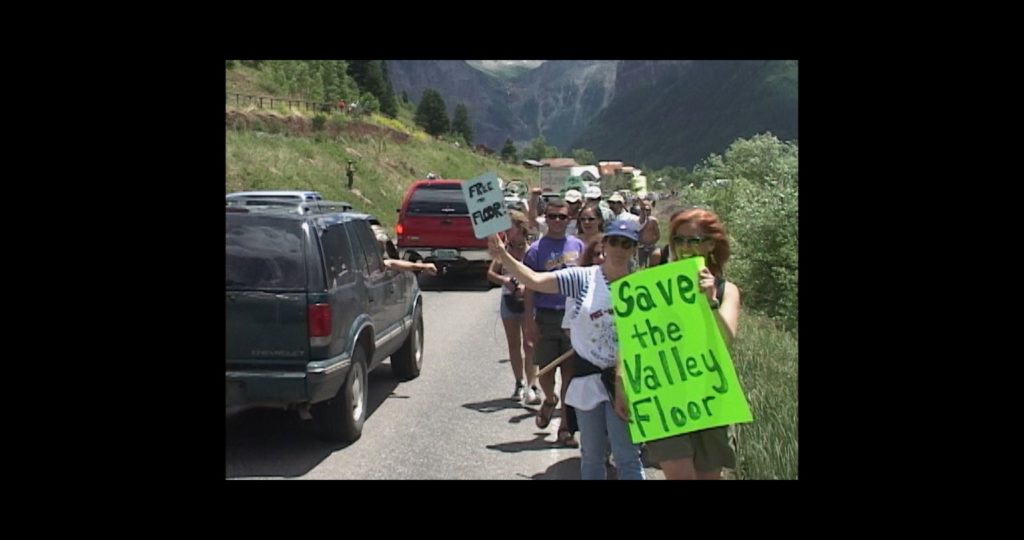
Together, the team felt that this particular story has a greater purpose. They hope this film will be the catalyst that inspires others in similar situations to work together for a greater cause in their own community.
“I was so inspired by the residents’ ability to come together and protect the land that I wanted to share their story with others,” Melmon said.
Melmon and Reinhart faced challenges relying on the memories of the same cast of characters — hoping that they would remember the details of a story as it happened 15 years prior.
“We needed it to feel current. Yeah, you want the audience to be rooting for them and I was a little worried about that going in,” Reinhart said. “But it’s amazing how easy it is for them to talk about it as though it’s happening right now. I was even surprised myself … I didn’t want to manipulate the conversation. But it actually worked out.”
The filmmakers premiered their film at the 2019 Sedona International Film Festival with many of the Telluride residents in attendance. Three showings and packed theaters with audiences cheering for the town — even though the outcome was already known.
As they entered other festivals across the country, they won a multitude of awards for best documentary feature, best cinematographer award, audience choice awards, best impact film and best editing award, among others.
During the COVID-19 pandemic, the filmmakers’ efforts came to a halt, but they knew that they needed to keep the momentum going to acquire distribution — but began losing steam.
“Taking film distribution to the next level is a tricky business,” Melmon said. “We want to do everything we can to stand out, inspire audiences and protect our beautiful lands … our film’s title; ‘Forever Wild’ celebrates the core values of the valley floor struggle and allows us to fly our own unique flag … but it’s a difficult road ahead. And my absolute passion, how important it is, to realize how we need each other, we really do need each other.”
Taking notes from their own film’s outcome and persevering, this award-winning team now has something to celebrate: “Forever Wild” has been picked up by PBS and will be seen in 90 markets nationwide. On Saturday, April 23 at 6 p.m., “Forever Wild” will be broadcast in Arizona on PBS-8, KAET-TV Phoenix.
“Wh en s ome b o d y changes their opinion, because of the film we did, I feel like we’re on the right track,” Reinhart stated.
“My biggest takeaway,” Johnson stated, “it’s about democracy. Our voices coming together to be heard … and those votes are what propelled things and for progress to happen. So, it makes me think about democracy a lot. It makes me also think about the struggle. And this is a conversation that we’re continuing to have.”
To have their film broadcast on PBS is a major victory for these filmmakers who began their journey in 2017. It is their dream to make an indelible mark around the world by sharing the story of how the valley floor will remain forever wild.


